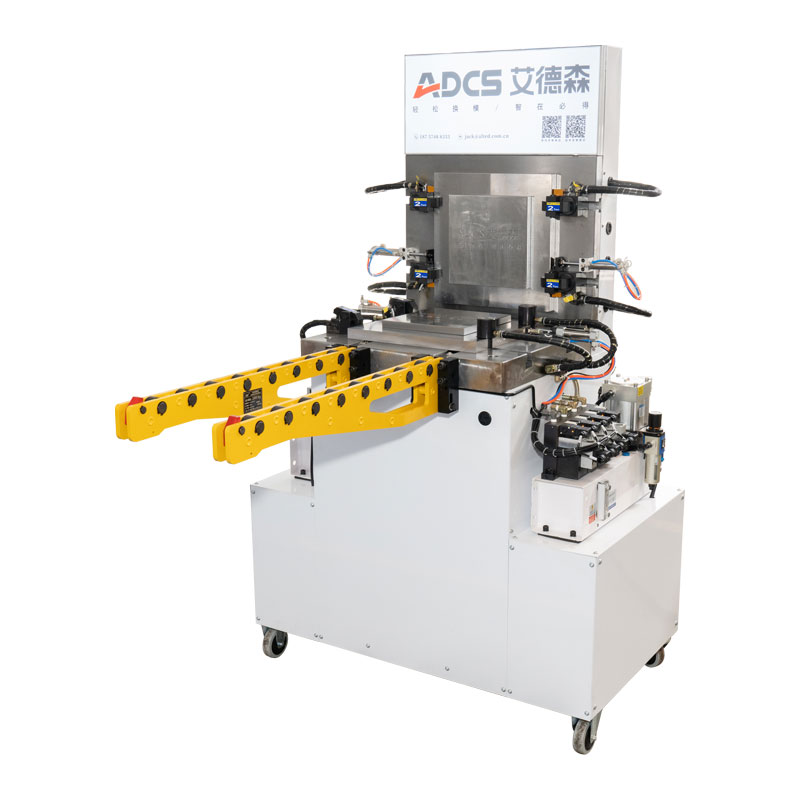How Can a Quick Mold Change System Revolutionize Your Manufacturing Process?
2025-02-20
In today’s fast-paced manufacturing world, efficiency is key to staying competitive. Industries that rely on molding processes, such as plastic, automotive, and consumer goods, are constantly looking for ways to optimize production times and reduce costs. One such solution that has emerged as a game-changer is the Quick Mold Change (QMC) system. But how exactly can a Quick Mold Change system transform your production line, and what benefits does it offer?
What is a Quick Mold Change System?
A Quick Mold Change (QMC) system is a technology designed to streamline the process of changing molds in industrial machinery, particularly injection molding machines. The traditional mold change process can be time-consuming, labor-intensive, and prone to errors. However, with a QMC system in place, manufacturers can significantly reduce the time it takes to change molds and improve overall workflow.
These systems are typically automated or semi-automated, involving components like mold clamping systems, mold handling equipment, and rapid changeover mechanisms. QMC systems are engineered to make mold changeovers faster, safer, and more precise, which in turn leads to higher productivity and lower downtime.
How Does a Quick Mold Change System Work?
At its core, a QMC system reduces the mold change process to a few simple steps. Here's how it typically works:
1. Automated Mold Removal:
A mold is removed from the injection molding machine using an automated system, such as robotic arms or mold handling equipment. This eliminates the need for manual labor, reducing the risk of injury and minimizing human error.
2. Quick Mold Clamping:
Once the new mold is in place, a quick clamping mechanism is used to secure it in position. The quick clamping system ensures that the mold is tightly held, preventing movement or misalignment during the molding process.
3. Speed and Precision:
The quick and precise clamping, combined with efficient mold handling, allows for faster changeovers. This reduces downtime significantly, enabling machines to get back to production quicker.
4. Integrated Systems:
Many QMC systems integrate with other automation systems in the factory, allowing for even faster mold changeovers. For example, sensors can monitor the status of the molds and alert operators when it’s time to change, reducing the chances of errors and delays.
What Are the Key Benefits of a Quick Mold Change System?
1. Reduced Downtime:
The most obvious advantage of a QMC system is reduced downtime. Traditional mold changeovers can take anywhere from 30 minutes to several hours. With a QMC system, this time is reduced to just a few minutes, ensuring that production lines are up and running quickly.
2. Increased Productivity:
By reducing downtime and enabling faster mold changes, manufacturers can increase overall productivity. More cycles can be completed in a day, leading to higher output without the need for additional machinery or labor.
3. Cost Efficiency:
Faster mold changes mean that machinery spends less time idle, which leads to reduced operating costs. Additionally, labor costs are reduced because fewer workers are needed to manage the mold change process.
4. Improved Product Quality:
With more precise and consistent mold changes, the likelihood of defects due to incorrect mold alignment is minimized. This can lead to better quality products, fewer reworks, and less scrap material.
5. Safety:
Manual mold changes often involve heavy lifting and the risk of injury. With a QMC system, much of the mold handling is automated, improving workplace safety and reducing the potential for accidents.
6. Flexibility and Versatility:
A QMC system can be used across various industries and for different types of molds, providing manufacturers with greater flexibility. Whether you are working with large or small molds, complex designs or simple ones, the system can adapt to different needs.
7. Environmentally Friendly:
Reducing downtime and improving efficiency often translates to lower energy consumption. The faster your machines are in operation, the less energy is wasted, making your manufacturing process more eco-friendly.
How to Implement a Quick Mold Change System?
Implementing a QMC system requires an initial investment, but the return on investment (ROI) can be seen relatively quickly due to the efficiency gains and cost savings. Here’s how you can implement a QMC system in your manufacturing facility:
1. Assess Your Current Process:
Start by analyzing your current mold change process. How long does it take? What are the pain points? Identifying areas that need improvement will help you understand how a QMC system can be tailored to your specific needs.
2. Choose the Right System:
There are different types of QMC systems available, depending on your machinery and production line. It’s important to choose a system that fits your operational requirements. You may need to work with suppliers to customize the system to your specifications.
3. Training and Integration:
Once the system is in place, it’s crucial to train your staff on how to operate it effectively. Integration with existing equipment and systems should be seamless to ensure smooth transitions during production.
4. Continuous Monitoring and Improvement:
After installation, regularly monitor the system’s performance and make adjustments as necessary. As your production needs evolve, you may need to upgrade or tweak the system for optimal results.
What Industries Benefit Most from Quick Mold Change Systems?
While QMC systems are beneficial in a variety of industries, they are especially valuable in sectors with high-volume production and tight turnaround times. Industries that benefit from QMC systems include:
- Plastic Manufacturing:
For companies that produce a variety of plastic products, such as packaging, automotive parts, or consumer goods, QMC systems can make mold changes fast and efficient.
- Automotive Industry:
The automotive sector relies heavily on injection molding to create parts like bumpers, dashboards, and trim. With QMC systems, manufacturers can quickly switch between different molds, ensuring high output with minimal delays.
- Medical Device Manufacturing:
For manufacturers of medical components, precision and speed are essential. A QMC system helps maintain high standards of quality while reducing lead times.
- Consumer Goods:
Companies producing small household items or electronics that require different molds can benefit from the flexibility and speed offered by QMC systems.
Conclusion
A Quick Mold Change system is a powerful solution for manufacturers looking to improve their operational efficiency, reduce downtime, and lower costs. By automating and streamlining the mold change process, manufacturers can achieve faster production cycles, higher productivity, and better product quality. In today’s competitive marketplace, the ability to adapt quickly and operate efficiently is essential, and a QMC system can provide the edge needed to stay ahead of the competition.



